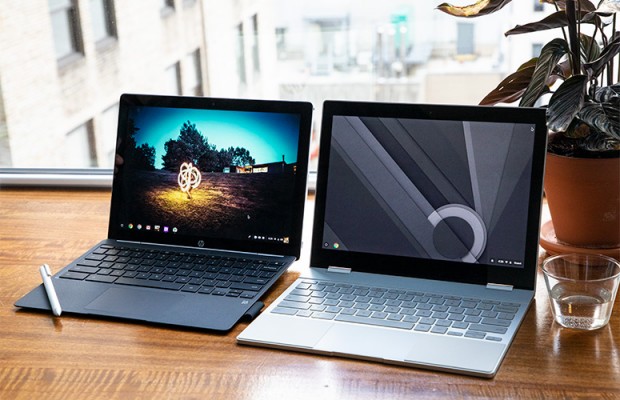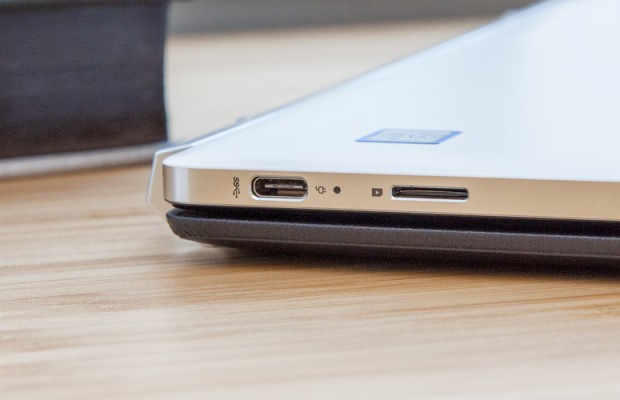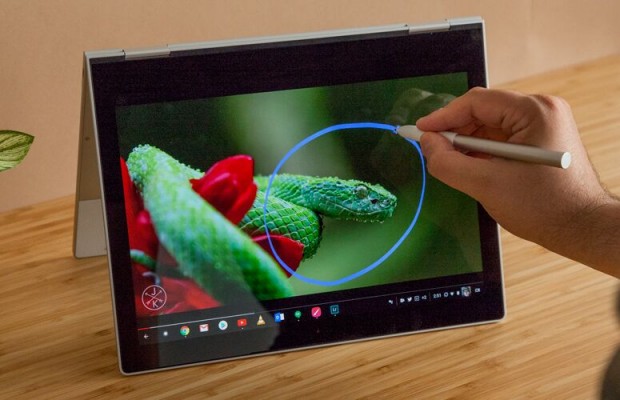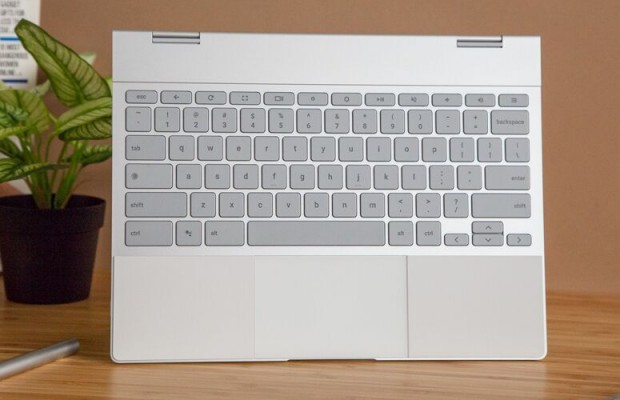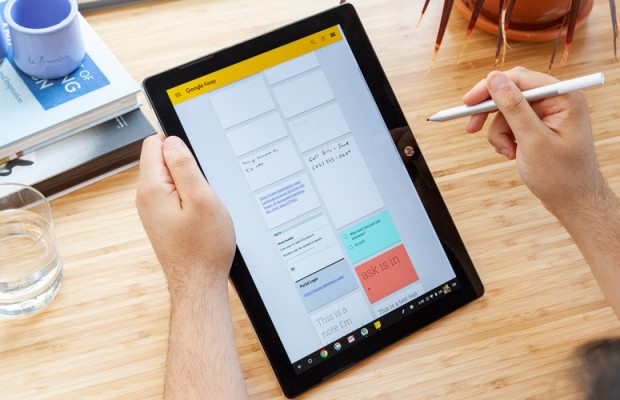HP Chromebook x2 vs. Google Pixelbook: Face-Off!
Premium Chromebooks are invading the PC market, with Lenovo, Dell and Acer releasing their first laptops in the segment later this year. Until then, there are really only two devices you should choose from in this limited category: the HP Chromebook x2 and the Google Pixelbook. We put the Pixelbook up against Asus' excellent Chromebook C434, but what about HP's detachable?
If you're attracted to what Chrome OS has to offer — a simple interface, strong security and Android app support — and don't want cheap hardware, then the Pixelbook and Chromebook x2 should be at the top of your list.
But these relatively pricey 2-in-1s each have their own set of pros and cons. So, let's find out which one is right for you
HP Chromebook x2 vs. Google Pixelbook: Specs Compared
| Row 0 - Cell 0 | HP Chromebook x2 | Google Pixelbook |
| Starting Price (as configured) | $599 | $999 ($1,199) |
| Colors | Ceramic White and Oxford Blue | Silver and White |
| Display | 12.3-inch 2K (2400 x 1600) | 12.3-inch 2K (2400 x 1600) |
| CPU | Intel Core m3-7Y30 | Intel Core i5-7Y57, Intel Core i7-7Y75 |
| RAM | 4GB | 8GB, 16GB |
| SSD | 32GB eMMC | 128GB, 256GB, 512GB SSD |
| Key Travel | 0.6 mm | 0.9 mm |
| Ports | 2 USB Type-C, Headphone, SD card | 2 USB Type-C, Headphone |
| Webcam | 5MP, 12.5MP (rear-facing) | HD (720p) |
| Size | 11.5 x 8.3 x 0.3 inches | 11.4 x 8.7 x 0.4 inches |
| Geekbench 4 | 6,637 | 7,927 |
| Battery Life (hrs:mins) | 8:50 | 6:50 |
| Weight | 3.2 pounds | 2.5 pounds |
Design
Google and HP took different approaches to bringing tablet functionality to their Chromebooks. Like the majority of 2-in-1s, the Pixelbook has an adjustable hinge that enables the display to fold back flat, whereas the HP Chromebook x2 is a detachable, so you can lift the lid off its base and use it as a true tablet.
These methods have their advantages and disadvantages. Bendback 2-in-1s allow for tent mode, so you can prop your laptop on a desk and view content without a keyboard between you and the display. However, because the lid remains attached to the base, these convertibles are clunky in tablet mode. In contrast, detachables make for excellent tablet alternatives, but aren't as flexible.
Sign up to receive The Snapshot, a free special dispatch from Laptop Mag, in your inbox.
The HP Chromebook x2 and Google Pixelbook are a pair of attractive devices and are some of the slimmest and most lightweight Chromebooks available. The x2 comes in a white anodized aluminum body with a blue, leather-textured rubber keyboard. Keeping with the aesthetic introduced on Pixel smartphones, the Pixelbook has a two-tone glass-and-aluminum design. Silicon wrist rests and subtle accents add finishing touches to an already streamlined look.
MORE: Lowest Weight Laptops
Both laptops are also very portable. The Pixelbook takes the cake, weighing just 2.5 pounds compared to the 3.2-pound Chromebook x2. The x2 (11.5 x 8.3 x 0.3 inches) does have a slightly smaller footprint than the Pixelbook (11.4 x 8.7 x 0.4 inches), but you probably won't notice the difference.
Winner: Draw
Ports
Because of how slim the Chromebook x2 and Pixelbook are, these laptops can't accommodate most input types. Still, if you can choose only one port, it should be USB-C, and these laptops have multiple.
The only difference between the Chromebook x2 and Pixelbook is that the HP has an SD card slot. Found on both devices are dual USB Type-C ports and a headphone/mic jack.
Winner: HP Chromebook x2.
Display
The HP Chromebook x2 and the Google Pixelbook have excellent displays, but we prefer the Pixelbook's by a razor-thin margin.
Both laptops have 12.3-inch panels with 2K resolution, or 2400 x 1600-pixels. Images are sharp on the dense 3:2 panels, and we appreciate how crystal clear text looks when viewed in a Google Doc.
But overall, the Pixelbook edges out the Chromebook x2 when you dig deeper into the benchmarks. At 421 nits, the Pixelbook's display shines a bit more brightly than the Chromebook x2's, although the HP emits an impressive 403 nits. The displays are even more closely matched in terms of color, with the Pixelbook reproducing 117 percent of the sRGB color gamut and the Chromebook x2 falling just short, at 114 percent.
MORE: Laptops with the Most Colorful Screens
We had no problems using the responsive touch screens on either laptop to navigate the web or draw images with our finger or a stylus.
Winner: Google Pixelbook.
Keyboard, Touchpad, and Active Pen
Another consequence of a slim design is low key travel. We prefer keys to depress a distance of at least 1.5 millimeters. This typically results in a more comfortable, rewarding typing experience. Unfortunately, the Chromebook x2 and Pixelbook fall well short of this mark.
The keyboard on the HP Chromebook x2 has shallow travel of just 0.6 mm, but makes up for it with an ideal actuation force of 70 grams. The Pixelbook's 0.9 mm of key travel is more tolerable, and the 68-gram actuation force offers pleasant resistance. While low key travel may turn away some typists, the keyboards on both laptops are surprisingly serviceable. We received almost identical scores from these laptops in the 10fastfingers.com typing test.
Both Chromebooks have quick and responsive touchpads, but our preference goes to the 4 x 2.6-inch surface on the Pixelbook. Minor stutter when using the Chromebook x2's touchpad puts it a rung behind.
As 2-in-1s with touch screens, both the Pixelbook and Chromebook x2 offer stylus support for taking notes or drawing. Artists and students will appreciate the responsiveness of both of these displays, although their input speed largely depends on what app you're using. The Pixelbook had no problems with our doodling in Google Keep, but there was noticeable lag when we drew in Android apps like SketchBook, Squid and Infinite Painter. Similarly, the Chromebook x2 kept pace in Keep, but it stumbled when we tried writing in Microsoft OneNote.
Winner: Google Pixelbook.
Performance
With the Chromebook x2 positioned as a midtier laptop and the Pixelbook as a premium device, there is, as expected, a substantial gap in performance between the two machines. However, the HP holds its own against the more expensive competitor.
Available only in the configuration we tested, the Chromebook x2 comes equipped with an Intel Core m3-7Y30 CPU, 4GB of RAM and 32GB of eMMC storage. The Pixelbook we reviewed has higher-end specs, including an Intel Core i5-7Y57 CPU, 8GB of RAM and a 256GB SSD.
In the Geekbench 4 test, which measures overall performance, the Pixelbook came out ahead, with a score of 7,927. The HP Chromebook x2 did a respectable job with a score of 6,637, but just couldn't keep up. Both laptops fell well short of the iPad Pro (13,306) and the mainstream laptop category average (9,154).
The Pixelbook achieved a score of 145 on the JetStream JavaScript benchmark, which measures the performance of web apps. That's well above the 109.6 score of the Chromebook x2. Again, the Google and HP Chromebooks failed to reach the mainstream laptop category average of 180.7.
MORE: Laptops with the Best Overall Performance
There's nothing splitting these two laptops when it comes to graphics performance. The Intel HD Graphics 615-equipped Chromebook x2 and Pixelbook both rendered 5,000 fish at up to 33 frames per second on the WebGL graphics test.
Winner: Google Pixelbook.
Battery Life
The HP Chromebook x2 rebounds from a disappointing showing in the performance round with excellent battery life. The detachable 2-in-1 lasted 8 hours and 50 minutes on the Laptop Mag Battery Test, which involves continuous web surfing at 150 nits of display brightness.
The Pixelbook endured for only 6 hours and 50 minutes on our test — 2 hours shy of the Chromebook x2 and below the 7:27 category average.
Winner: HP Chromebook x2.
Value
The HP Chromebook x2 is the less expensive machine, but you'll have to sacrifice specs to save money. For $699, the single configuration offered gets you an Intel Core m3-7Y30 CPU, 4GB of RAM and 32GB of eMMC storage.
MORE: Best Laptops Under $500
For comparison, the base Pixelbook costs $999 and packs an Intel Core i5-7Y57 CPU, 8GB of RAM and 128GB of SSD storage. Doubling the storage to 256GB costs an extra $200, while the high-end model costs $1,649 for a Core i7 CPU with 16GB of memory and a 512GB SSD. Both the Chromebook x2 and Pixelbook rely on Intel HD Graphics 615 to run games.
Winner: HP Chromebook x2.
Overall Winner: HP Chromebook x2
| Row 0 - Cell 0 | HP Chromebook x2 | Google Pixelbook |
| Design (10) | 8 | 8 |
| Ports (10) | 6 | 5 |
| Display (15) | 11 | 12 |
| Keyboard/Touchpad (10) | 6 | 7 |
| Performance (20) | 10 | 13 |
| Battery Life (20) | 16 | 12 |
| Value (10) | 8 | 6 |
| Overall (100) | 65 | 63 |
The Google Pixelbook fought valiantly, but, in the end, the HP Chromebook x2 comes out on top, thanks to its longer battery life and lower price. Additionally, the Chromebook x2 has an SD card slot and its premium detachable design stands up well to the Pixelbook's gorgeous glass-and-aluminum build.
There are several areas where the Pixelbook outperforms the Chromebook x2, though only by a slim margin. With more powerful internals, the Google machine scored higher marks than the x2 in our performance tests, and its display and keyboard edge out the HP. Still, if we had to choose between these two laptops, we'd save a few hundred dollars and go with the Chromebook x2.
The other option is to hold off on buying a premium Chromebook altogether. Google is pegged to unveil a Pixelbook 2 in Oct. 2018, and, as previously mentioned, most leading laptop makers will release higher-priced Chrome OS devices in the coming months. But if you need a great premium Chromebook right now, go with the HP.
Credit: Laptop Mag
Phillip Tracy is the assistant managing editor at Laptop Mag where he reviews laptops, phones and other gadgets while covering the latest industry news. After graduating with a journalism degree from the University of Texas at Austin, Phillip became a tech reporter at the Daily Dot. There, he wrote reviews for a range of gadgets and covered everything from social media trends to cybersecurity. Prior to that, he wrote for RCR Wireless News covering 5G and IoT. When he's not tinkering with devices, you can find Phillip playing video games, reading, traveling or watching soccer.
